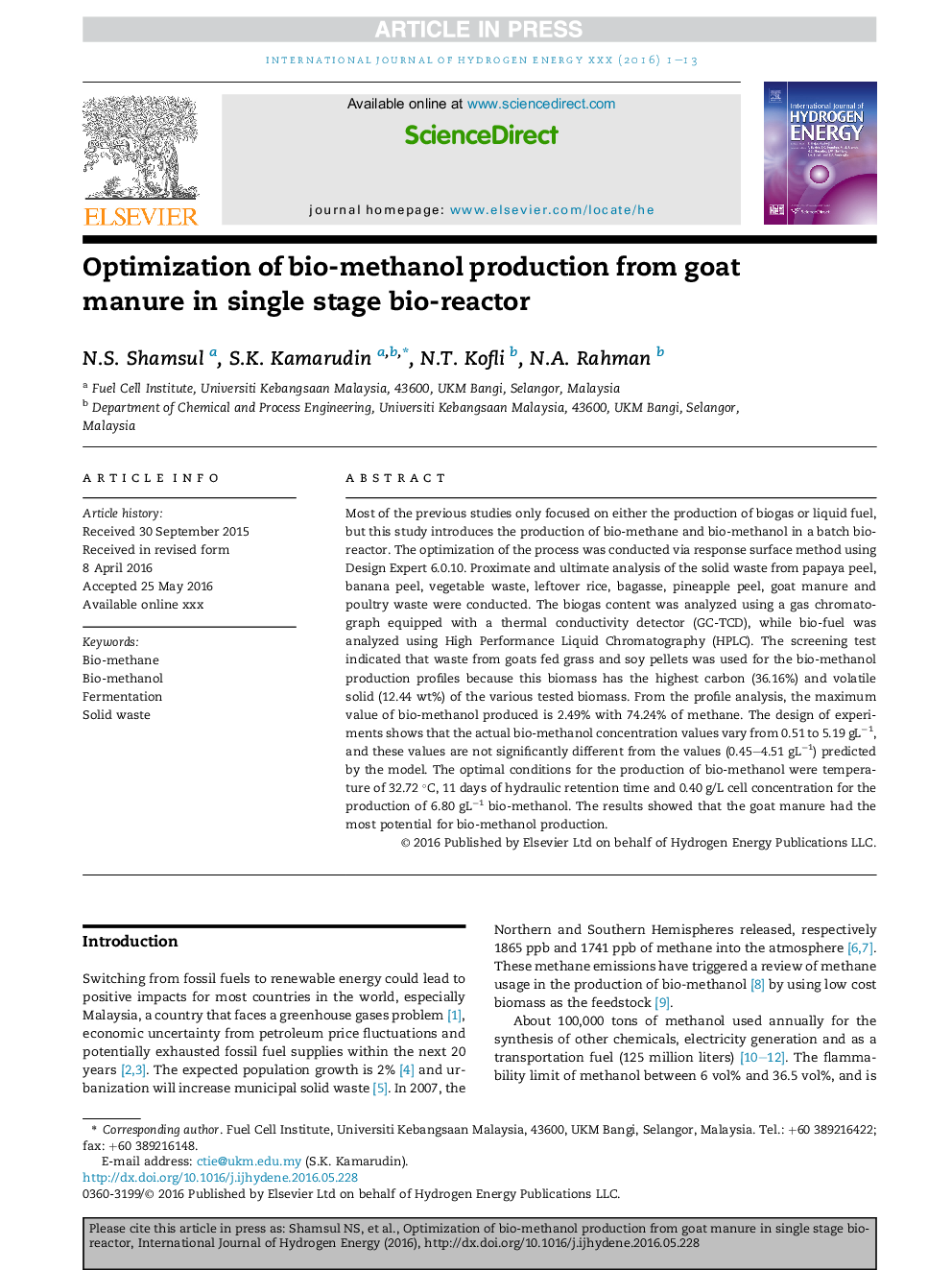| Article ID | Journal | Published Year | Pages | File Type |
|---|---|---|---|---|
| 5147828 | International Journal of Hydrogen Energy | 2017 | 13 Pages |
Abstract
Most of the previous studies only focused on either the production of biogas or liquid fuel, but this study introduces the production of bio-methane and bio-methanol in a batch bio-reactor. The optimization of the process was conducted via response surface method using Design Expert 6.0.10. Proximate and ultimate analysis of the solid waste from papaya peel, banana peel, vegetable waste, leftover rice, bagasse, pineapple peel, goat manure and poultry waste were conducted. The biogas content was analyzed using a gas chromatograph equipped with a thermal conductivity detector (GC-TCD), while bio-fuel was analyzed using High Performance Liquid Chromatography (HPLC). The screening test indicated that waste from goats fed grass and soy pellets was used for the bio-methanol production profiles because this biomass has the highest carbon (36.16%) and volatile solid (12.44 wt%) of the various tested biomass. From the profile analysis, the maximum value of bio-methanol produced is 2.49% with 74.24% of methane. The design of experiments shows that the actual bio-methanol concentration values vary from 0.51 to 5.19 gLâ1, and these values are not significantly different from the values (0.45-4.51 gLâ1) predicted by the model. The optimal conditions for the production of bio-methanol were temperature of 32.72 °C, 11 days of hydraulic retention time and 0.40 g/L cell concentration for the production of 6.80 gLâ1 bio-methanol. The results showed that the goat manure had the most potential for bio-methanol production.
Related Topics
Physical Sciences and Engineering
Chemistry
Electrochemistry
Authors
N.S. Shamsul, S.K. Kamarudin, N.T. Kofli, N.A. Rahman,
